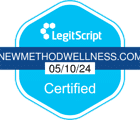Alcohol cravings are a normal and expected part of addiction recovery. However, many people get comfortable in addiction recovery and do not expect alcohol cravings to arrive and disrupt their lives. The cravings tend to be different at a certain point in recovery. The point where you feel a little more relaxed and sobriety seems easy and natural. The cravings might even make you think that you can drink alcohol safely again.
When alcohol cravings become less frequent in the latter part of recovery, you might start thinking that they have some merit. You might think that now that you’ve recovered from the worst part of your alcohol addiction, that cravings aren’t really cravings but in fact, a sign that you can start drinking alcohol safely again.
Continue reading for the hard facts on alcohol cravings and what you can do to overcome them when they appear further down the road.
What Are Alcohol Cravings?
There are different schools of thought on what exactly cravings are in relation to alcohol addiction. When you crave alcohol, you’re in a certain state of anticipation. Alcohol sounds good, and its familiar effects also sound good. You might recall fond memories of drinking alcohol that causes cravings to start. The cravings process tends to be different for everyone. Cravings can come on due to situations and thoughts, but they can also come on due to smells or by eating certain foods. For example, if you eat a type of food that you often ate when drinking alcohol.
Are There Specific Symptoms For Cravings?
The symptoms of alcohol cravings tend to be different for everyone. Some people might experience excitement or a sense of arousal. Other people may experience a more depressive feeling. Ultimately, something will trigger you to think about alcohol. If you don’t get away from those thoughts, you’re likely to entertain them. The longer you entertain them, the more likely you are to think about how you can drink alcohol safely. In other words, the more time you spend entertaining your thoughts about alcohol, the more likely it is that you will succumb and decide to have a drink.
Why Your Brain Causes Cravings
Alcohol cravings are either due to withdrawal or as the result of a trigger, which can be many different things for different people. If you’re in a period of sustained addiction recovery, then a trigger is likely to blame for your craving for alcohol. In either case, the cravings come from your brain. During withdrawal from alcohol, certain neurochemicals are suppressed and cause your brain to want alcohol in order to get to a place of normal functioning. As your brain has learned to regulate itself with alcohol, it makes demands for alcohol to function normally.
On the other hand, when you experience alcohol craving from triggers, it’s more to do with memory. Your brain associates drinking with a feeling of reward. When you are exposed to a trigger that reminds you of that reward, your brain demands alcohol in order to relive that experience.
How To Handle Cravings
The type of alcohol craving you have indicates how you should respond to it. If you’re still drinking alcohol and have an active addiction, then your craving is likely a psychological response to withdrawing from alcohol. In this case, it’s best to consult a medical professional so you don’t have to deal with cravings alone. It’s also important because alcohol withdrawal has the potential to be quite dangerous.
However, if your cravings come from triggers or cues while you’re in recovery, then you can craft a strategy to deal with them. You can’t necessarily undo your brain’s connection with alcohol completely, but you can come up with ways to deal with its demands. Alcohol is such a strong part of American culture that it can be very difficult to avoid it entirely. That’s why it’s even more important for people with alcohol addiction to find successful ways to manage cravings.
Control Alcohol Cravings By Planning Ahead
Planning ahead to control cravings involves a two-pronged approach. The first prong is to have an idea of what might trigger your desire for alcohol. The second prong is to find ways to distract your thought process. As mentioned previously, the longer you entertain thoughts of drinking, the more likely you are to give in. The idea behind having a two-pronged approach is so that you can deal with unexpected triggers and cravings. The three-step process listed below may help you deal with both expected and unexpected cravings:
1. Recognize
2. Avoid
3. Cope
When you can recognize and identify triggers, you can also work to avoid them in the future. When you encounter an unexpected trigger, you can implement your coping strategy to keep any cravings from getting worse.
How To Recognize Triggers
What exactly is a trigger and how can you recognize one? There are two types of triggers: external and internal. External triggers include the following:
• People
• Places
• Times of day
• Situations
These types of triggers are usually the most obvious and predictable, which also makes them more avoidable. These triggers are usually also connected with your previous drinking habits. For example, a person you used to drink with or specific times of day when you consumed alcohol.
On the other hand, internal triggers can be tricky. They can be random and sudden. For example, certain thoughts, emotions, or physical sensations can work as internal triggers.
In order to identify your triggers, one idea is to track your cravings to drink for a few weeks to get an idea of what causes them.
Avoid Alcohol Cravings By Avoiding Risky Situations
The easiest way to avoid cravings for many people is simply to avoid high-risk situations. At home, make sure that you don’t have alcoholic drinks on hand. In social situations, avoid activities and gatherings that involve drinking. For the latter issue, it’s important that you don’t allow yourself to feel guilty about turning down social activities that might involve drinking. It won’t necessarily be forever, but just until you can better control your cravings.
Coping With Triggers
When unexpected triggers hit, you’ll need some different strategies to avoid cravings. The main key is to not entertain whatever is making you think about drinking. Distractions work well in this situation. Find something else to do like lifting weights, listening to music, or watching a video. Other strategies include the following:
• Talk to someone you trust
• Challenge the thought and replace it
• Remind yourself why you’re in recovery and making a change
• Ride out the thought, accept it and move on
• Leave any high-risk situations as quickly as you can
New Method Wellness is an addiction treatment center for substance use disorders like alcoholism. If you or a loved one are struggling with alcohol addiction or alcohol cravings, get in touch with our professional staff today.







